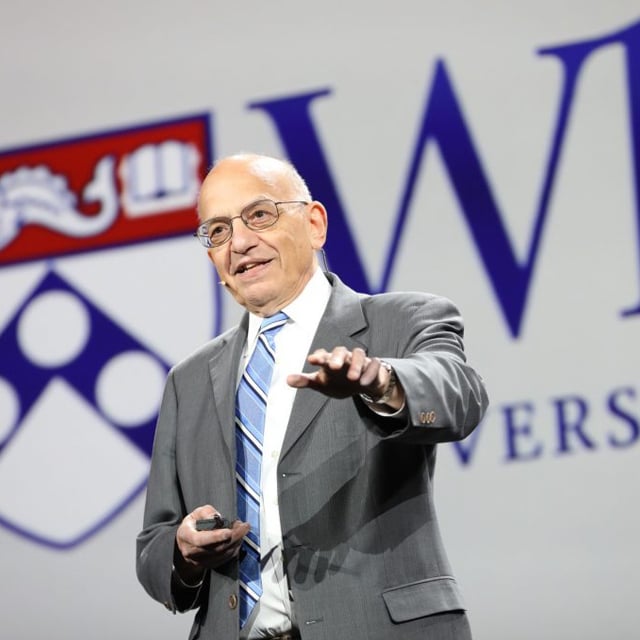Jeremy Siegel Fears Fed 'Falling Behind' on Rate Cuts

Noting the Fed’s 2% inflation target, Siegel compared that to the core Personal Consumption Expenditures Price Index sitting at 2.5%.
“So we are above target, but not very much,” he said. “We’ve come down from over 8% on PCE inflation to within a half a percent.”
The Fed’s current stance is restrictive, Siegel said, adding, “It’s almost like Chairman Powell wants to see the bottom fall out of the labor market and then they’ll do it.”
In a commentary published Monday on the WisdomTree website, Siegel called for an immediate 75-basis-point rate cut and another 75-basis-point rate cut in September, noting the Fed’s long-term 2.8% Fed funds rate goal and the current unemployment and inflation numbers the bank uses to set the benchmark rate.
“Why hasn’t the Fed lowered its very restricted 5.33% Funds rate at all?” he asked in the post.
On the webcast, he offered that Powell “is not going to do an emergency cut” and that the data doesn’t require scaring people, but the central bank is “unnecessarily tight” now. The Fed’s own data suggest its benchmark interest rate should be within 1% of its 2.8% long-term goal, Siegel said.
Any more weakness in the unemployment rate or lower inflation would open sizable gaps, Siegel said. If the Fed waits until inflation hits 2%, “even Powell himself has admitted that’s too late. I mean, the data to me is very persuasive that you should move more rapidly.”
Prices aren’t going to go back down to pre-pandemic levels, “although a lot of Americans would certainly love to do that. It ain’t gonna happen. The most important thing now is, accept what has happened. Slow inflation to 2%, but don’t squeeze it down to a lower rate,” Siegel said.
The economist said he wanted to ask Powell, “what criteria are you using? If you are so close — 90% on one, overshot on the other — of the two mandates that you have that you haven’t moved one basis point yet in easing credit.”
When the Fed does start cutting rates, it will be particularly helpful to small companies, he suggested, since high short-term rates hit these firms harder than larger businesses.
Photo: Lila Photo for TD Ameritrade Institutional






